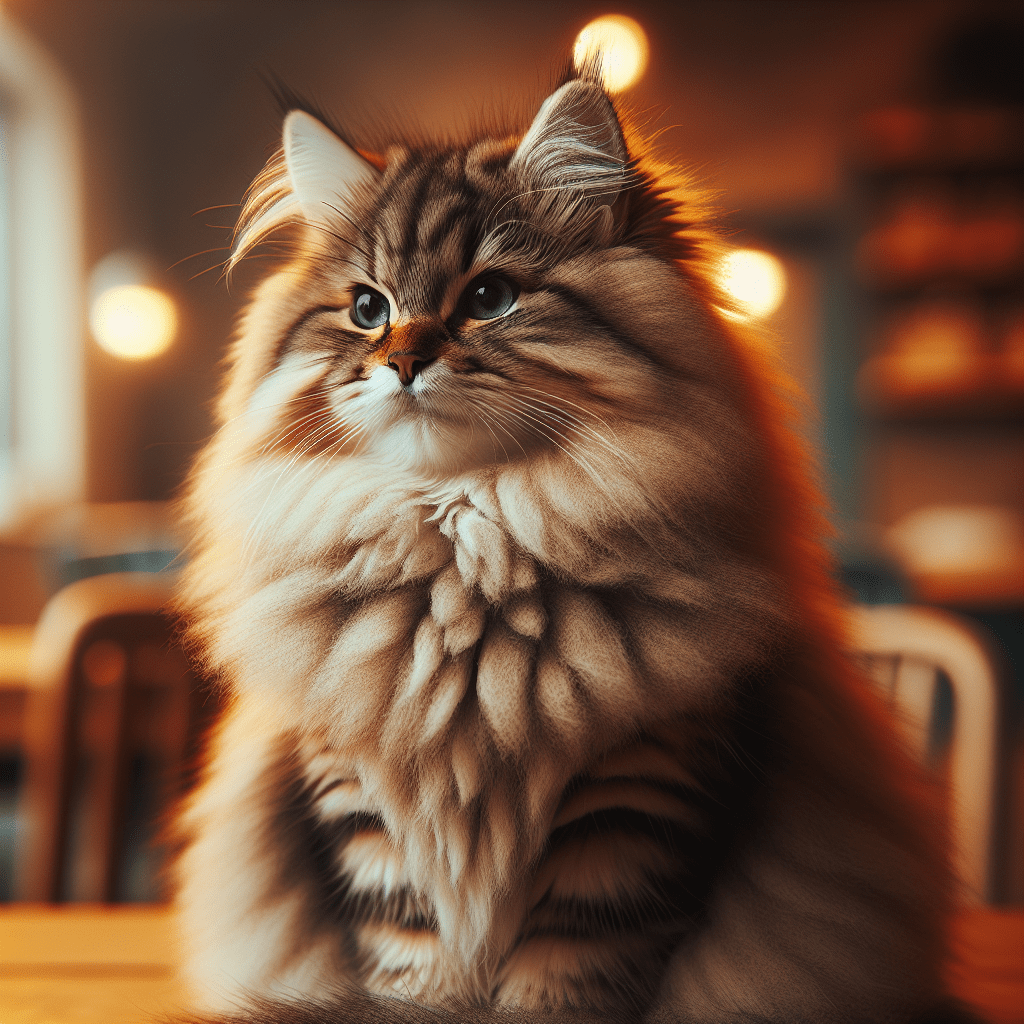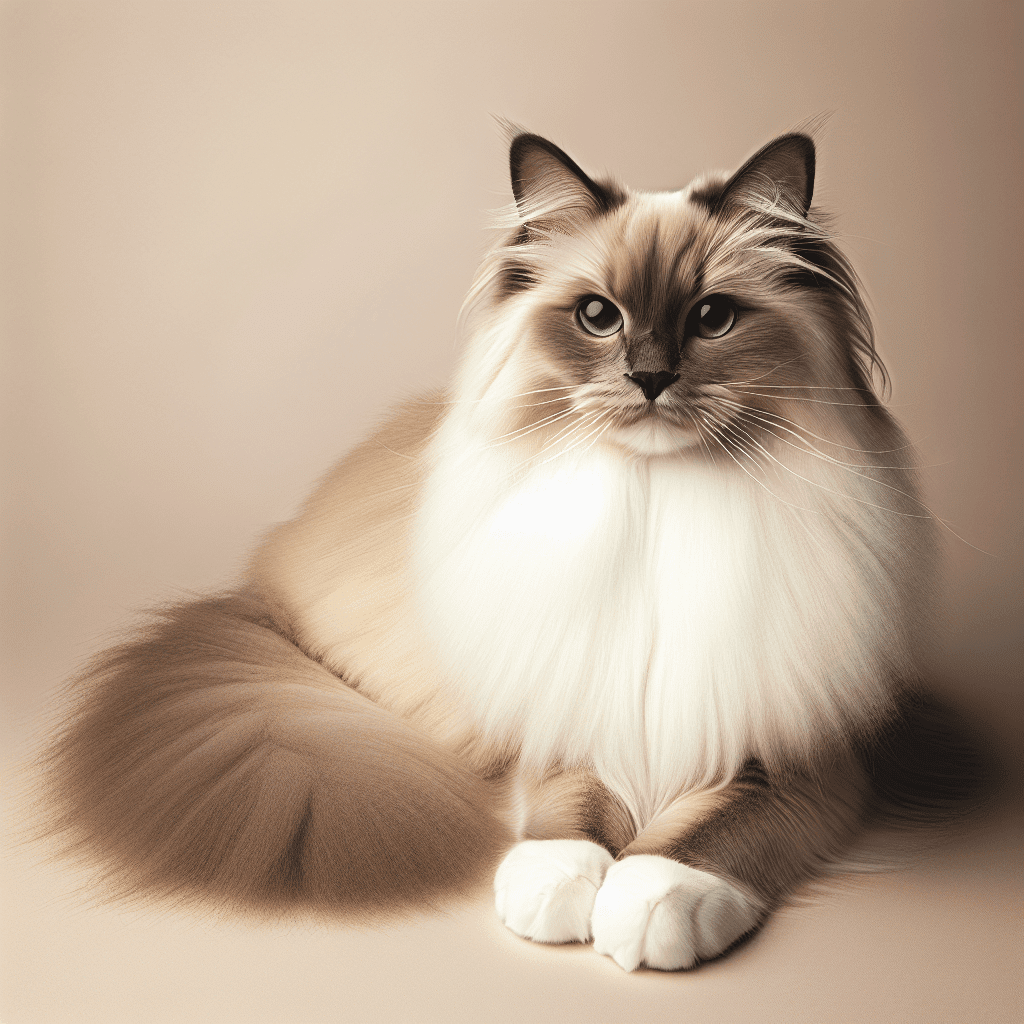If you’ve ever seen a cat with tufts on its ears, you know just how enchanting and unique they can be. These fluffy adornments, often called “lynx tips,” add an exotic touch to our feline friends, making them look like they’ve walked straight out of a wild, magical forest. In this blog post, we’ll delve into the world of cats with tufted ears, shedding light on their distinct features and health considerations, and, of course, introducing you to the top 15 breeds renowned for their captivating ear tufts.
Table of Contents
Understanding Ear Tufts in Cats
What are Ear Tufts?
Ear tufts are the wispy hairs sprout from the tips of a cat’s ears. These aren’t to be confused with ear furnishings; the longer, softer hairs inside the ear help keep out debris. Ear tufts, on the other hand, are more about aesthetics and, for some cats, a bit of practical functionality.
Benefits of Ear Tufts
While they might seem purely decorative, ear tufts do serve some practical purposes. For one, they can help keep a cat’s ears clean by trapping dust and debris before it gets inside. Additionally, these tufts can aid in directing sound into the ear, making these cats excellent hunters. And of course, let’s not forget the primary benefit—eye-catching, wild-looking charm!
Ear Tufts vs. Ear Furnishings
It’s important to differentiate between ear tufts and ear furnishings, although both add to a cat’s fluffy allure. Ear tufts are the pointy bits atop the ears, adding a unique aesthetic to the cat’s appearance, while ear furnishings are the soft, protective hairs that line the inside. Both provide a unique aesthetic and play roles in maintaining ear health.
Top 15 Cat Breeds with Ear Tufts
Norwegian Forest Cat
The Norwegian Forest Cat is a majestic breed with striking ear tufts contributing to its wild and rugged look. These cats are known for their dense, water-resistant coats and powerful builds. They are also affectionate yet independent, excellent climbers, and friendly with families.
- Average Age: 12-16 years
- Weight: 12-16 pounds (5.5-7.3 kg)
Personality Traits:
- Affectionate yet independent
- Excellent climbers
- Friendly with families
Care Tips:
- Regular grooming due to their thick fur
- Plenty of vertical spaces to climb
American Curl
The American Curl is easily recognizable by its unique ears that curl backward, often adorned with delicate tufts.
- Average Age: 12-16 years
- Weight: 5-10 pounds (2.3-4.5 kg)
Personality Traits:
- Playful and energetic
- Highly sociable
- Great with children
Care Tips:
- Minimal grooming required
- Regular ear checks due to unusual ear shape
Maine Coon
Maine Coons are one of the most popular cat breeds, and their ear tufts are a significant part of their appeal.
- Average Age: 12-15 years
- Weight: 10-25 pounds (4.5-11.3 kg)
Personality Traits:
- Gentle giants
- Very sociable
- Intelligent and trainable
Care Tips:
- Regular grooming to prevent matting
- Keep them entertained with interactive toys

Highlander
The Highlander is a newer breed known for its wild appearance, including prominent ear tufts.
- Average Age: 10-15 years
- Weight: 10-20 pounds (4.5-9 kg)
Personality Traits:
- Energetic and playful
- Loyal to their families
- Very vocal
Care Tips:
- Regular exercise to expend energy
- Interactive play sessions

Turkish Van
The Turkish Van is not only famous for its love of water but also for its prominent ear tufts.
- Average Age: 12-17 years
- Weight: 10-20 pounds (4.5-9 kg)
Personality Traits:
- Active and intelligent
- Loves swimming
- Strong-willed
Care Tips:
- Regular grooming
- Provide water play opportunities

Pixie-Bob
Pixie-Bobs sport ear tufts that add to their wild look, closely resembling a bobcat.
- Average Age: 13-16 years
- Weight: 8-17 pounds (3.6-7.7 kg)
Personality Traits:
- Loyal and dog-like
- Playful
- Good with children
Care Tips:
- Social interaction is a must
- Regular grooming

Siberian
Siberians have tufted ears that match their thick fur coats, making them look like mini Siberian tigers.
- Average Age: 11-18 years
- Weight: 8-17 pounds (3.6-7.7 kg)
Personality Traits:
- Affectionate and friendly
- Agile jumpers
- Usually hypoallergenic
Care Tips:
- Regular brushing to manage thick fur
- Lots of interactive play
Ragdoll
Ragdolls are adored for their blue eyes and silky fur, complemented by their charming ear tufts.
- Average Age: 12-17 years
- Weight: 10-20 pounds (4.5-9 kg)
Personality Traits:
- Gentle and laid-back
- Loves being held
- Good with families
Care Tips:
- Regular grooming to keep fur silky
- Lots of cuddles and affection

LaPerm
LaPerm cats are distinguished by their unique curly coats and notable tufts of fur on their ears.
- Average Age: 10-15 years
- Weight: 6-12 pounds (2.7-5.4 kg)
Personality Traits:
- Affectionate and gentle
- Likes to cuddle
- Playful
Care Tips:
- Regular brushing to maintain curls
- Moderate exercise to keep fit

Birman
Birmans are elegant cats with striking blue eyes and tufted ears, adding to their royal appearance.
- Average Age: 12-16 years
- Weight: 6-15 pounds (2.7-6.8 kg)
Personality Traits:
- Gentle and affectionate
- Intelligent
- Sociable
Care Tips:
- Regular grooming
- Lots of social interaction
Abyssinian
Abyssinians may have shorter fur, but their ear tufts give them a wild and curious look.
- Average Age: 9-15 years
- Weight: 6-10 pounds (2.7-4.5 kg)
Personality Traits:
- Active and playful
- Very intelligent
- Loves attention
Care Tips:
- Regular play sessions
- Minimal grooming required

Somali
Somali cats are essentially long-haired Abyssinians with beautiful ear tufts.
- Average Age: 11-16 years
- Weight: 6-12 pounds (2.7-5.4 kg)
Personality Traits:
- Energetic and playful
- Extremely intelligent
- Loves social interaction
Care Tips:
- Regular grooming to keep the fur in check
- Interactive toys for mental stimulation

Caracal
Caracals are wild cats often domesticated for their stunning ear tufts and sleek bodies.
- Average Age: 12-15 years in captivity
- Weight: 25-40 pounds (11.3-18.1 kg)
Personality Traits:
- Agile and powerful
- Independent
- Requires experienced handling
Care Tips:
- Special diet and care
- Plenty of space to roam

Lynx
While Lynx cats are more wild than domestic, their ear tufts are iconic and give them a regal and fierce look.
- Average Age: 10-14 years in captivity
- Weight: 18-64 pounds (8.2-29 kg)
Personality Traits:
- Solitary and independent
- Adapted to cold climates
- Needs plenty of space
Care Tips:
- Requires experienced handling
- Specialized diet

Turkish Angora
Turkish Angoras are elegant cats with flowing fur and ear tufts that enhance their graceful appearance.
- Average Age: 12-18 years
- Weight: 5-10 pounds (2.3-4.5 kg)
Personality Traits:
- Playful and energetic
- Intelligent
- Loves human company
Care Tips:
- Regular grooming to prevent matting
- Lots of interactive play
Health Considerations for Cats with Ear Tufts
Common Health Issues
Cats with tufted ears can sometimes face specific health issues primarily related to their ear anatomy. Ear infections can be more common due to the additional hair trapping moisture and debris. Monitoring your cat’s ears for signs of infection, such as redness or unusual discharge, is essential.
Maintaining Ear Health
Regular cleaning and grooming of your cat’s ears can help prevent issues. Use a vet-approved ear cleaner and check their ears weekly for any signs of trouble. Keeping the ear tufts trimmed to a manageable length can also aid in maintaining cleanliness.
When to Consult a Vet
Notice your cat scratching its ears, shaking its head, or catching a whiff of something funky? Maybe there’s some weird discharge? It sounds like it’s vet time. Catching these signs early can prevent more significant health issues, keeping your kitty happy and comfy.
Conclusion
Cats with tufted ears bring a unique charm and a touch of the wild to our homes. From the majestic Norwegian Forest Cat to the playful American Curl, these breeds offer diversity in personality, appearance, and care needs. Their ear tufts add to their aesthetic appeal and serve practical purposes.
Considering one of these breeds can bring a delightful and distinctive pet into your life. Whether you’re drawn to the gentle giant Maine Coon or the energetic Abyssinian, there’s something genuinely magical about cats with tufted ears.
Suppose you’re considering adding one of these charming felines to your family. Why not contact breeders or rescue organizations specializing in these breeds? Your next best friend might be a whisker away.
Happy cat-choosing!
Frequently Asked Questions (FAQ)
Do all cats with ear tufts have the exact grooming needs?
Nope, grooming needs depend on the breed, especially for those with ear tufts. Take the Maine Coon and Siberian cats, for example—they need regular brushing because of their thick fur. But then you’ve got breeds like the Abyssinian, which are pretty low-maintenance. It’s super important to get the lowdown on what your particular breed needs to keep them healthy and comfy.
Are cats with ear tufts more prone to ear infections?
Cats with those adorable tufted ears might often catch ear infections because of all that extra hair trapping moisture and gunk. Just keep their ears clean and check them out regularly to avoid trouble. And hey, when in doubt, always hit your vet for the best ear care tips for your furry buddy.
Can I trim the ear tufts on my cat?
You can trim those ear tufts if they’re getting too long and bothering your cat. But it’s generally a good idea to get help or advice from a pro groomer or your vet to ensure you don’t accidentally nick those sensitive ears.
What’s the best way to introduce a cat with ear tufts to my home?
Gradually introduce your new cat to your home, providing a quiet, safe space where they can retreat and feel secure. Ensure you have all necessary supplies, including food, water, litter, and toys. Spend time interacting with your cat to build trust and create a loving environment for them.
Do cats with ear tufts get along well with children and other pets?
Many cats with ear tufts, such as the Pixie-Bob and Ragdoll, are known for their gentle and sociable nature, making them great companions for children and other pets. However, individual temperament can vary, so it’s crucial to supervise interactions initially and give your cat time to adjust.
Where can I adopt or purchase a cat with ear tufts?
Start by hitting local breeders who know the ins and outs of the breeds you’ve got your eye on. Also, remember to check out pet shelters and rescue groups. They might have the perfect cat with those adorable ear tufts waiting for a home. Just ensure those breeders are on the up and up, caring for their animals’ health and happiness.
Sarah Smith is a passionate dog and cat enthusiast, blogger, and pet care expert. With years of experience researching and writing about various dog breeds cat breeds, she brings a wealth of knowledge and insight to her blog, PetPession.com. Sarah loves exploring the unique traits, histories, and care needs of different breeds, helping pet owners make informed decisions. Her mission is to create helpful, friendly, and well-researched content that both educates and celebrates the joy of pet ownership. When she’s not writing, Sarah enjoys outdoor adventures with her own furry friends.


6 thoughts on “Top 15 Tufted Eared Cats Breeds with Wild Exotic Appeal”